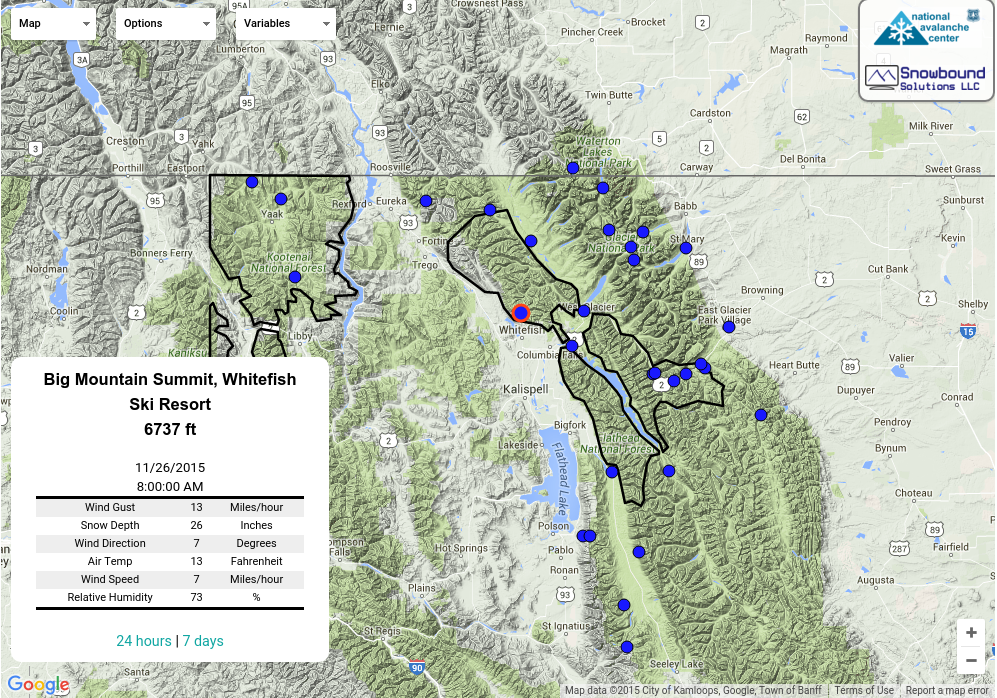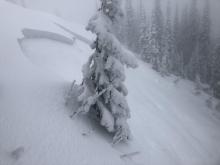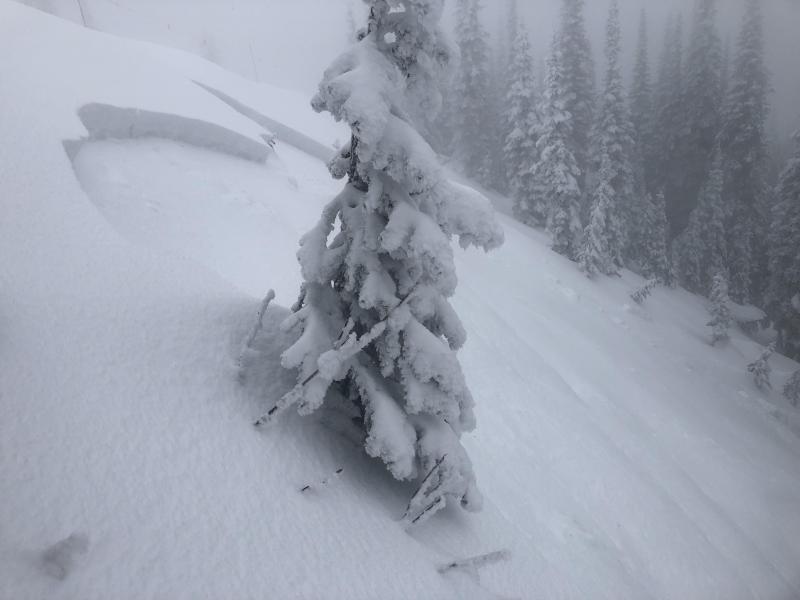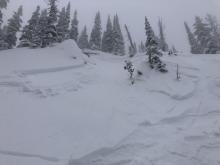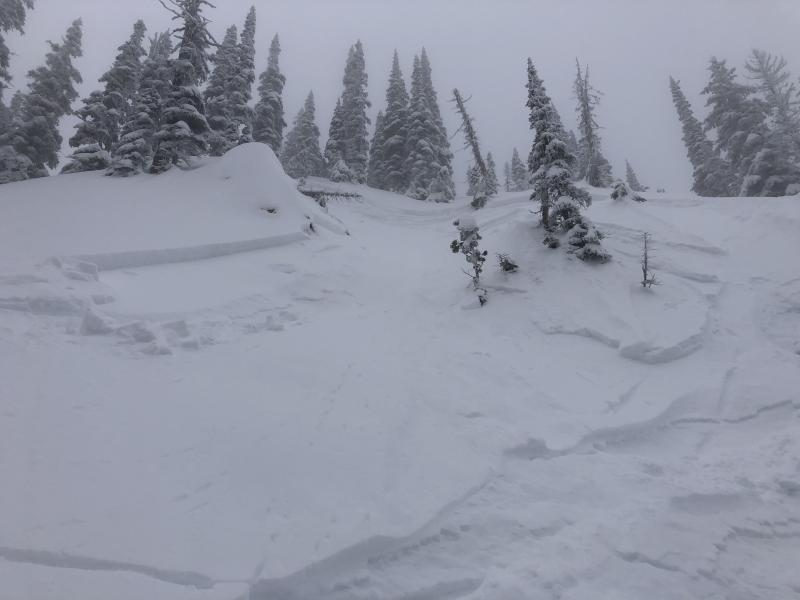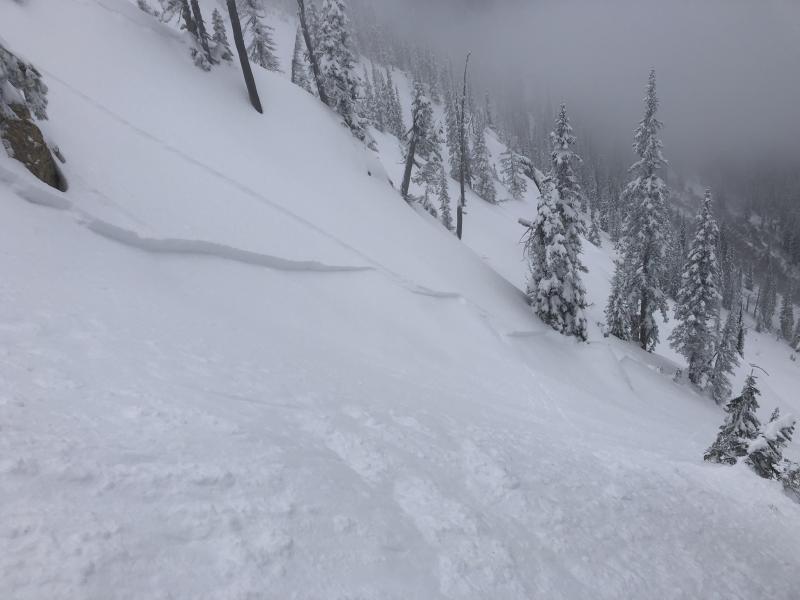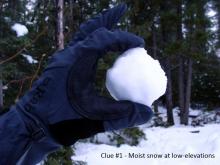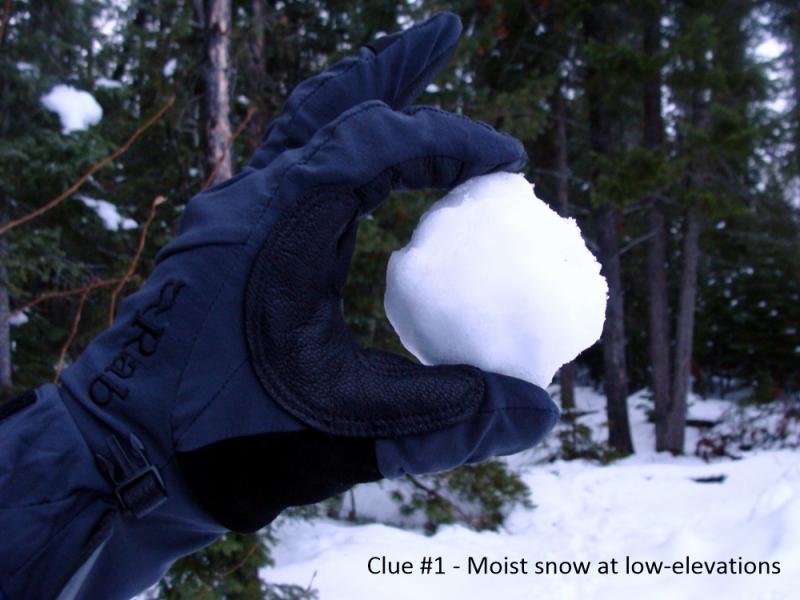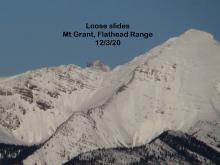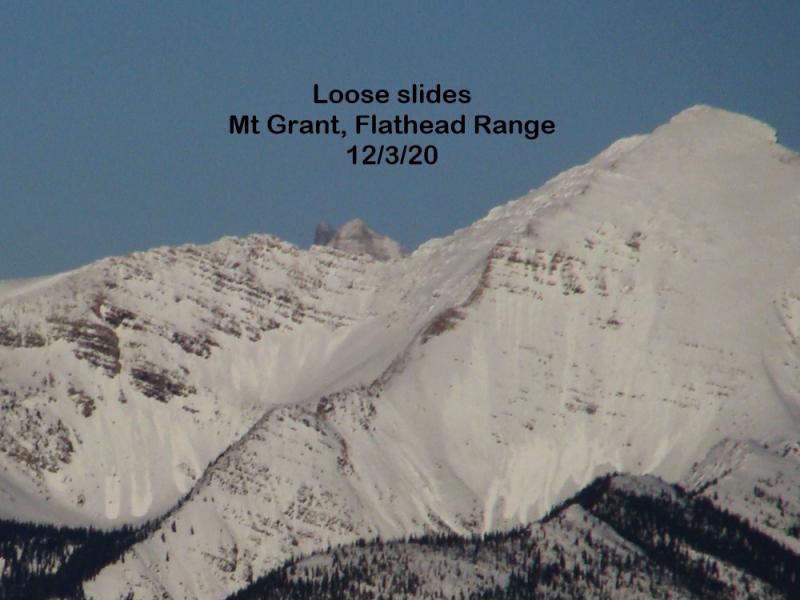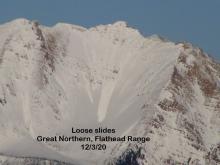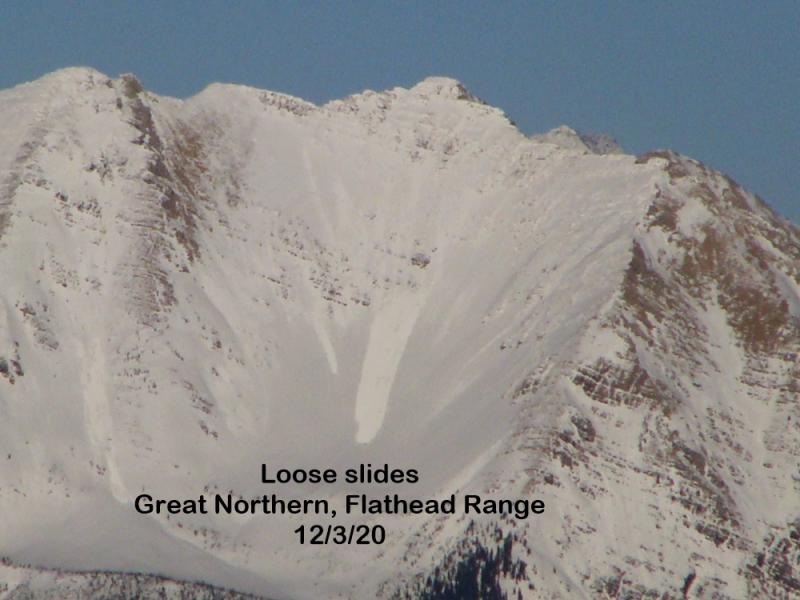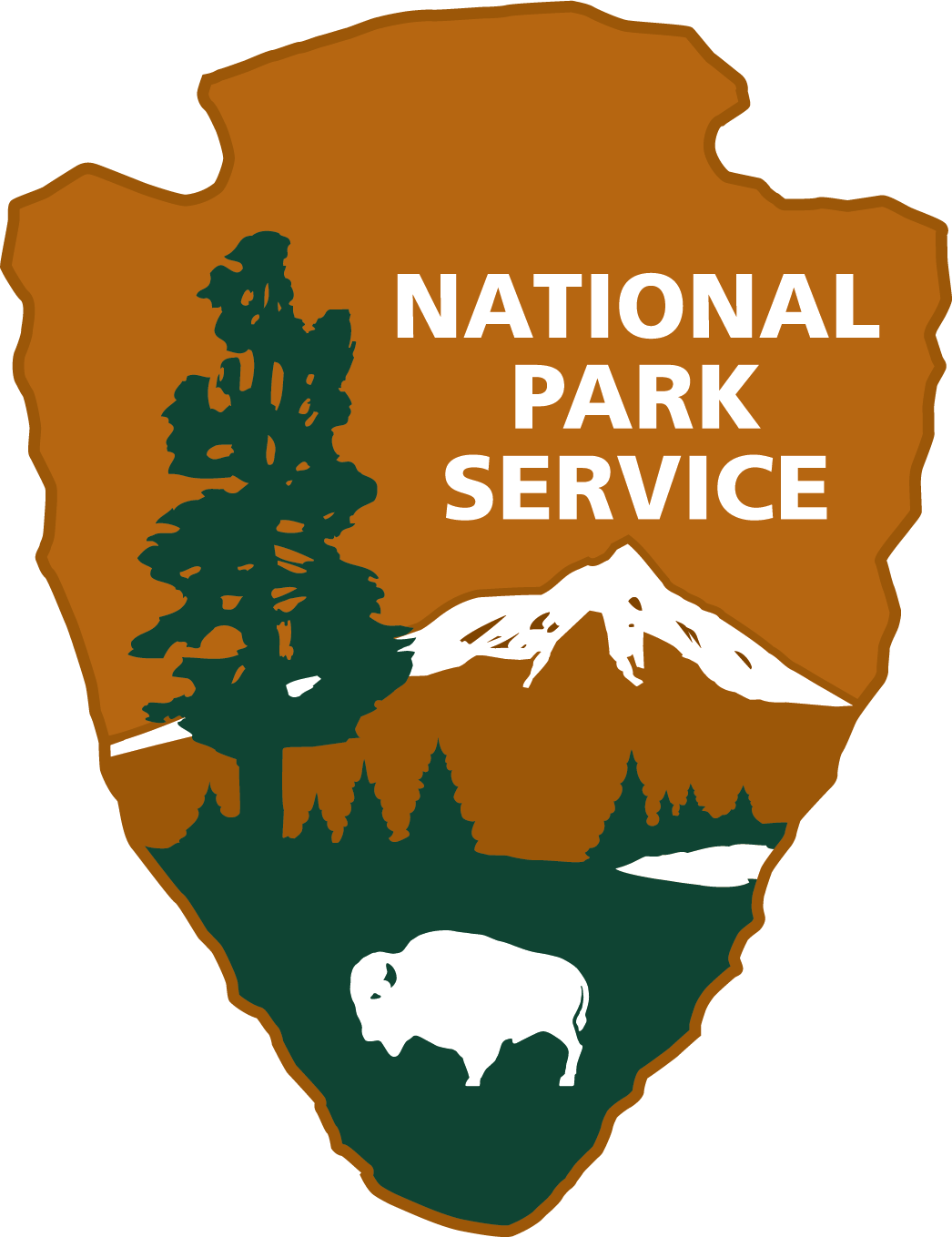| Thursday | Thursday Night | Friday | |
|---|---|---|---|
| Cloud Cover: | Partly/mostly cloudy. Isolated light showers early. | Mostly cloudy. Wind shifting to the north. | Diminishing winds and partly cloudy. |
| Temperatures: | 32-47 deg. F. | 19-28 deg. F. | 35-50 deg. F. |
| Wind Direction: | West-Southwest | North-Northwest | North |
| Wind Speed: | 8-9 gusts 20-21 | 5-7 gusts 17 | 4-5 |
| Snowfall: | 0 in. | 0-1 in. | 0 in. |
| Snow Line: |
Whitefish Range
Swan Range
Flathead Range and Glacier National Park
How to read the forecast
In the past two days about a foot of snow fell above 6500 feet favoring the Swan and Whitefish Ranges. Temperatures warmed and formed a thin, upside down storm layer. Additionally, 20-40 mph winds during the storm added depth to recent wind slabs. The avalanche danger is CONSIDERABLE above 6000 feet. Carefully, evaluate the snowpack and make conservative terrain choices. The danger is MODERATE in the mid elevations where it will remain possible to trigger loose, wet avalanches.
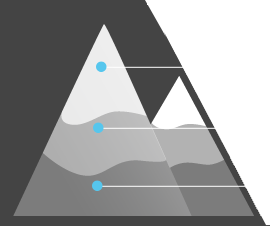
3. Considerable
?
Above 6500 ft.
2. Moderate
?
5000-6500 ft.
1. Low
?
3500-5000 ft.
- 1. Low
- 2. Moderate
- 3. Considerable
- 4. High
- 5. Extreme
-
Type ?
-
Aspect/Elevation ?
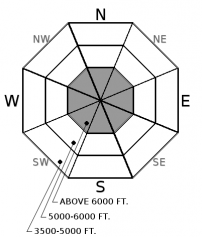
-
Likelihood ?CertainVery LikelyLikelyPossible
 Unlikely
Unlikely -
Size ?HistoricVery LargeLargeSmall

Not much snow was reported at our SNOTEL sites and Remote Weather Stations in the past 24 hours since most of them are located in the spring/winter transition zone. With a 48 hour water total of just above 1 inch expect to see a little more than a foot of snow from the past two days above 6500 feet particularly in the Swan and Whitefish Ranges. Temperatures warmed as the snow came in yesterday which likely formed a thin upside down storm layer that should still be sensitive today. Additonally, the moderate to strong southwest winds drifted the new, upper-elevation snow, and continued to thicken recent wind slabs. These slabs were formed on a firm, smooth crust that will provide a good sliding surface. Watch for obvious signs of storm snow instability like cracking and collapsing.
-
Type ?
-
Aspect/Elevation ?
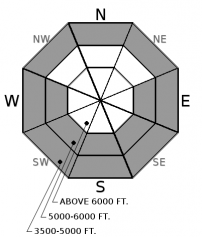
-
Likelihood ?CertainVery LikelyLikelyPossible
 Unlikely
Unlikely -
Size ?HistoricVery LargeLargeSmall

A few light rain showers lingering this morning followed by the potential to see a bit of sun this afternoon will, again, weaken the snow surface and increase the possibility of triggering a loose, wet avalanche. Avoid traveling on steep slopes and near terrain traps when the snow surface is moist and unsupportable.
The wet slab cycle we saw in mid-March due to high rain levels was impressive, but I don't think we have seen the last of them. Most of these avalanches occurred in the mid-elevation band. Though we did see some storm slab activity in the high elevations the upper snow pack absorbed most of the free-water before it could pool on deeper crusts. With the fickle and often surprising weather events that Spring in northwest Montana brings it's important to pay attention to conditions that could weaken these deep layers again. Like extended periods of warm and sunny weather and rain that soaks the snow at higher elevations.
Massive cornices exist along many of the ridgelines across the advisory area. Pay attention to changing weather conditions that could weaken these features like warming temperatures, sun exposure, additional wind-loading, and rain. It's important to pay attention to what is suspended above you given the unusual size and how overhung many of these cornices are. Keep a good distance from these while traveling along ridge lines as they can pull out further back than expected, even behind the solid ground. When a large cornice falls it has the potential to trigger deep instabilities that would otherwise remain dormant resulting in a large avalanche.
Glide cracks have also been observed opening up in many locations. The first reported glide avalanche this season was March 25 and occurred west of the WMR ski area in the southern Whitefish Range. There is a large amount of uncertainty associated with glide avalanches, so the best way to manage them is to avoid slopes where they are present.
Wednesday: Guy and Jenny rode into the Skyland area and observed active wind loading, but with little snow to tranport as windward slopes were nearly scoured. They saw a recent wind slab avalanche triggered by cornice fall on the east face of Slippery Bill Mountain.
Monday: Todd and Zach ventured to the Red Meadow area of the northern Whitefish Range. The depth of snow on top of the firm crust varied depending on elevation and apect, but they found up to 8 inches of snow above it at upper elevations. Rollerballs and small loose wet avalanches were easily triggered on top of the crust. We also received a report of a cornice triggered wind slab from outside the advisory area in Glacier National Park near St. Mary.
See below for all observations this season.
The system that moved through the area yesterday delivered 0.6-0.84 inch of water equivalent which registered as 2-4 inches of snow at SNOTEL sites and weather stations , but translates to more up high. Temperatures climbed to the mid-30s and winds were out of the southwest at 5-20 mph with gusts in the 30s. Currently, mountain temperatures range from 29-35º F, and winds are 6-12 mph with gusts to 20 mph. Today should see lingering showers this morning, becoming partly cloudy this afternoon. Temperatures should reach the mid-upper 30s. A trough of low pressure moving into the area today will shift the winds to the north this evening.
| 0600 temperature: | 29-35 deg. F. |
| Max. temperature in the last 24 hours: | 31-36 deg. F. |
| Average wind direction during the last 24 hours: | Southwest |
| Average wind speed during the last 24 hours: | 5-15 mph |
| Maximum wind gust in the last 24 hours: | 23-35 mph |
| New snowfall in the last 24 hours: | 1-4 inches |
| Total snow depth: | 86-123 inches |
This advisory applies only to backcountry areas outside established ski area boundaries. This advisory describes general avalanche conditions and local variations always occur. This advisory expires at midnight on the posted day unless otherwise noted. The information in this advisory is provided by the USDA Forest Service who is solely responsible for its content.

